These Are Our Hearts: Plain 100+ Run Report
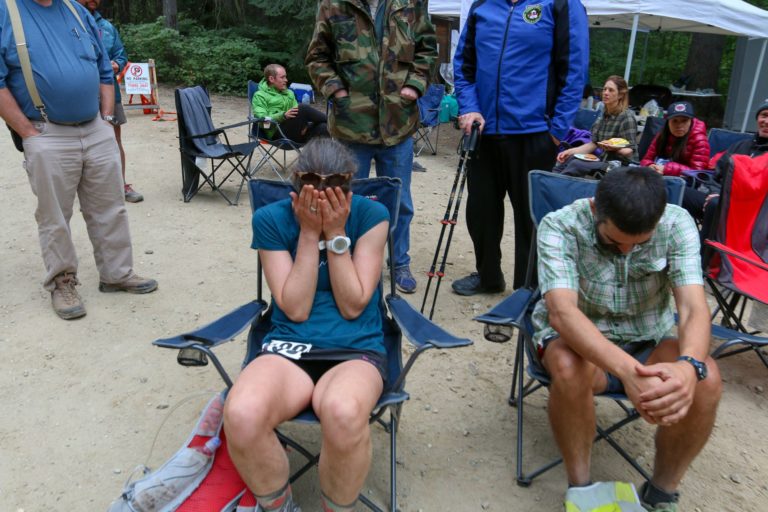
Spoiler alert: We finished. Photo by the talented Ross Comer.
(Note: This is a fairly blow-by-blow personal account. Only read it if the detailed minutiae of ultrarunning race reports interest you. For less navel-gazing and more details/history about Plain itself, stay tuned for a future article in print-magazine land.)
In the past year, anytime George and I have ever been in the midst of doing something especially miserable—getting nauseated and vomity on a run at altitude, sweating bullets under a blazing sun on a trail with no tree coverage, trying not to break our ankles on shitty, rutted out singletrack, developing blisters from dust pouring into our shoes—he’s inevitably turned to me with a giddy gleam in his eye and said, “This is just like Plain.”
And I’ve invariably frowned and thought, I will never run Plain.
Things to know about Plain (otherwise known as the Plain Endurance Runs, or Plain 100+): It’s no-frills ultrarunning at its finest—an unmarked course of 107ish miles spread out over two massive (different) loops. It’s unsupported, save one aid station at the 100K mark where the race directors will make you a cheeseburger before sending you on your merry, or not-so-merry, way. There are no T-shirts and no medals or belt buckles; finishers get a rock with the words “Plain 100” hand-painted on it.
You’re only apt to see a few humans along the way: any of the other few dozen folks each year with enough screws loose to want to run this thing, a handful of Search and Rescue folks who man checkpoints but are prohibited from providing runners with any navigational assistance, and the occasional passing dirt biker—because, you know, rather than following proper hiking trails like a normal ultramarathon, the majority of the Plain course is on nasty, rutted-out, moondust-laden dirt-bike trails anchored with cinder blocks.
For some reason previously unfathomable to me, this glory-less trudge through purgatory had captured George’s heart over the past four years. He’d DNFed the 100-miler once and finished the 100K twice. And for years, he’d been working on convincing me to run Plain, too.
I’m as easily talked into things as I’ve ever been, so, of course I signed up at the end of last month.
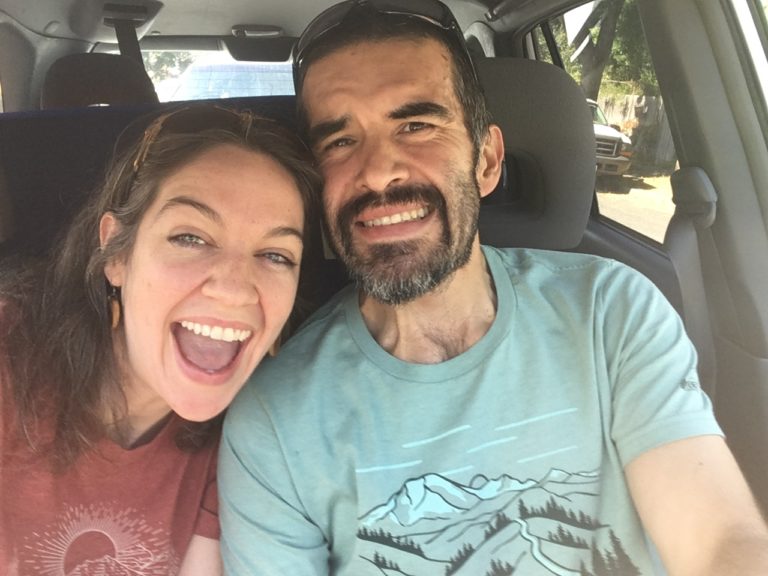
Bright-eyed and bushy-tailed, bound for Plain, with few inklings of the agony she had in store for us.
We had not planned to run together; we have fairly different strengths and weaknesses, and did not expect to be on the same page as each other for 100+ miles. Furthermore, this was his “A race” for the year, whereas I knew my body was not fully recovered from Fat Dog five weeks earlier. As a result, my mind was not really interested in trying (or capable of mustering motivation) to race. I was more interested in Plain as a way to experience a course that has meant so much to my partner.
I was also excited for the navigation challenge of it, since I’m notoriously adept at getting myself lost in the woods. Mostly, I looked forward to a weekend of introspection and solitude on the trails.
Still, however inadvertently, George and I wound up sticking together early on. Four miles in, we passed an intersection with a sign that said “WEDDING” and had an arrow pointing left. Jokingly, I asked him, “Are we going to the wedding?!” And Plain Brain must have already sunk in, because he replied, “Yes. To the wedding!” And so we turned left at the fork in the road. Within a minute, we grew doubtful of our decision and stopped to check our maps. We confirmed we’d made a wrong turn, so backtracked and rejoined the trickle of headlamps of other, less directionally challenged runners who knew better than to blindly follow signs meant for other people.
We remained within shouting distance of each other despite spreading out some on the climb up to Maverick Saddle. I ran and chatted awhile with Mark Cliggett—a real treat, since he and I hadn’t met before but had both followed each other’s Issy Alps attempts (his more successful than my own) over the past couple of years.
At the S&R checkpoint at the saddle, we put our hands over our hearts and checked in with this year’s requisite code word/phrase: “This is my heart.” After that, George and I fell into a groove running together, which kept us cruising strong and happy. Working together as a team felt great.
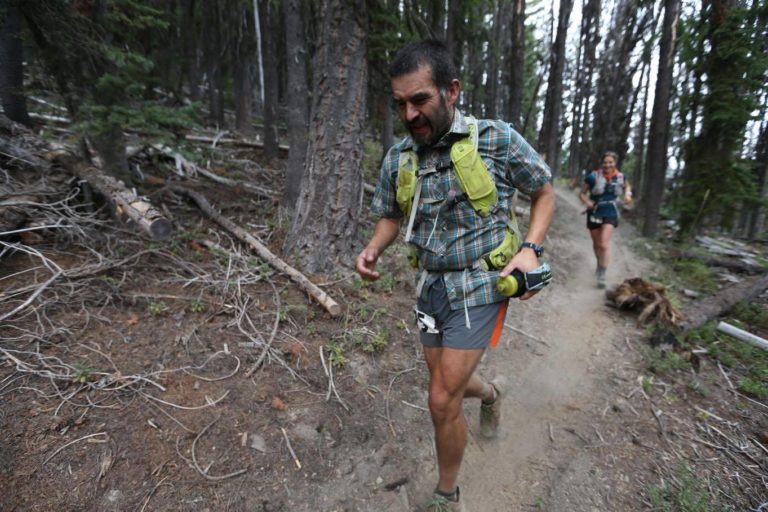
Photo by Ross Comer
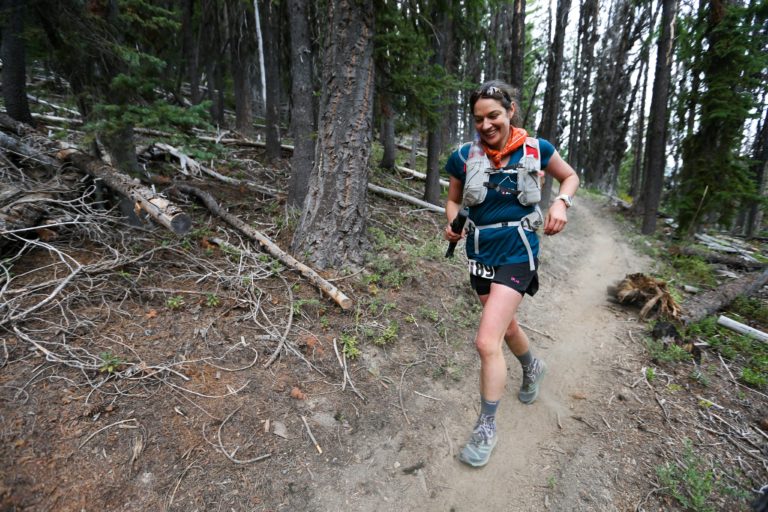
Photo by Ross Comer

This “great” thing lasted for 36 miles in total. We passed some folks, had nice chats with our fellow runners. We took a decent break at the oasis of Tommy Creek, where runners often spend time recouping, doing foot care, and filtering a gallon of water to carry for the long stretch ahead—14 miles of steep, exposed trail with no water sources. There, we enjoyed the company of other runners as we all tended to our bodies.
As we began the 5,000ish-foot climb up to Tyee Ridge, I felt happy and excited for George, knowing this kind of climbing is his strong suit. I was feeling OK—strong enough, but a bit worn down and unmotivated to move particularly fast. I felt ready to settle in on my own to a gentler pace than we’d been pushing thus far. I kissed him and wished him well. He took off like a mountain goat, climbing effortlessly and disappearing ahead of me on the trail.
Fifteen minutes later, though, I came around a switchback and George was waiting for me. He told me he felt like a jackass for leaving me behind. I told him he was a jackass for letting all his training this year go to waste by waiting up for my tortoise-y self instead of getting his head in race mode and taking advantage of his strengths on the course. No matter; he wanted to stick with me, he said.
Within minutes, I saw why: he was flagging mentally and physically. His eyelids were getting droopy. He told me that all of the sudden, he could hardly stay awake. (No surprise; he’d worked the graveyard shift at the hospital the night before we left for Plain, then we’d gotten up at 3:15 a.m. that morning, so he’d only slept a few hours total in the 48 hours leading up to the race.) He began suffering pretty hard, and my brain snapped into pacer mode. I traded him one of my caffeinated GUs for one of his non-caffeinated ones. The caffeine jolt helped him feel better for a while, but it was a short-lived reprieve.
I made lots of jokes about Fat Dog here, since he’d paced me through my low and sleepy points there, and I got to use all the same lines on him now that he’d used on me five weeks earlier.
“You have two options, buddy,” I told him. “You can either keep moving, or you can take a nap on the side of the trail. For two minutes.”
He acknowledged that a nap did, in fact, sound amazing.
“Oh, I see! Now a nap is OK,” I teased.
George laughed and explained, “Yes, I’m allowed to take a nap. I’m not leading this race.”
Around the same time, my trekking pole broke. Having accrued too much dust and grit in its collapsible joints, it just went flaccid on me mid-pole-plant. George said, “Ask yourself, What would Ras do?” I responded by picking a stick up off the ground and using that instead. Problem solved. Another runner, Nate, generously tried to help me fix my broken pole on the trail, but to no avail. No problem; the stick worked just as well.

(The broken pole got a free piggyback ride for some 30 miles until I could ditch it in my drop bag at the 100K mark. It was the second piece of Black Diamond gear to fail on me during this race; my almost-new Storm headlamp developed spontaneous cracks in its housing and ceased to hold a battery charge. Fortunately, we both carried backup flashlights, and I had my more powerful BD Ion light in my drop bag for the second loop, which fared better. BD, bless ’em, are sending me a replacement Storm for the one that failed on me. But, all in all, a good reminder of the importance of always having backups for any gear essentials.)
George and I had some great conversations for many miles that buoyed us. But as the day wore on, our spirits sagged. The longer we ran, the deeper George sunk into misery. I kept thinking that at any moment, he’d rebound, the way we so often do over the course of 100 miles. But instead, he just got sleepier and slower and more disappointed in himself. As someone who’s equally hard on myself when I feel like I’m failing at something, I had great empathy for what he was experiencing; I’ve spent plenty of races riding shotgun on the struggle bus.
Shortly after darkness fell, we came upon a runner, Jeff, who had literally fallen off the steep edge of the trail into a pit some 15 feet below. He was clawing his way back up to the trail and though he seemed startled, he reassured us he was (miraculously) unharmed from his tumble.
Due to headlamp woes, George and I shared a flashlight between the two of us on our descent into Deep Creek, the 100K mark. By the time we reached it—also the race’s starting line, finish line and lone aid station, thus a dangerous vortex for anyone pondering a DNF—we’d slowed down and George’s spirit was pretty broken. We checked in: This is my heart. Co-RD Tim Stroh was there, along with Tom and Chris, Plain’s legendary founders, who have known George since he ran his first ultra at one of their other races seven years ago. We soaked up all the hugs we could get.
I’d had George’s kids write him cards that I’d hidden in his drop bag before the race, never imagining he and I would reach the aid station at the same time. Now, as I pulled the cards out for him and set them in his lap, I felt so grateful for the messages his sweet children had written him a week earlier. With no prompting, they’d written variations on the same theme: It doesn’t matter if you win or lose; you’re still the best dad in the world. We love you.
As George read their messages, his face crumpled up into a mess of tears. We ate a couple cheeseburgers, drank some Coke and hot chocolate, then got out of there.
Loop two is about 45 miles and was, as they say, just Plain tough. When George wasn’t sleepy and forlorn, I was. We took turns having low points and coaching each other through them. We fantasized about napping, but it was too frigid up on the ridge lines to ever stop moving for more than a couple minutes at a time. I did stop once long enough to dump dust out of my shoes, and George was snoring on the ground within seconds. I never fully warmed back up again until the sun came up.
We ate caffeinated gels to try to keep ourselves awake. As a result, both of our hearts began jackhammering. Spending many hours above 5,000 feet in altitude did our poor, sea-level hearts no favors either. No amount of slowing our pace would calm them to non-alarming levels. Van passed us somewhere up by Chikamin Tie, vigorously brushing her teeth as she hiked, which she said was helping her stay awake.
Then George’s stomach went south on him. For the last 20 miles, he could no longer eat anything or drink water without gagging. It is hard to watch someone you love suffer so deeply—not only physically, but emotionally and mentally, too. I paced George at a 200-miler he ran five years ago and thought I’d seen him at the lowest of lows toward the end of that race, but the misery Plain wrought rivaled even that. A full-blown existential crisis had commenced.

Last stop to filter water, 7ish miles from finish. Photo by Ross Comer.
I wasn’t doing so hot either. I kept thinking, Wow, I don’t usually feel this tired when I’m pacing!, then being surprised to recall that I was also running the race myself. With about 100 miles down and seven to go to reach the finish, I took a nasty misstep on a root in the trail and hyperextended/sprained my ankle in a bad way. There wasn’t any acute pain, but it nested in quickly and then grew steadily worse. We checked in at the final checkpoint at Alder Ridge: This is my heart.
Within a few miles, I could barely walk. Keeping up with George was nearly impossible. With amusement at first, then desperation, I wondered if I was going to have to DNF this thing three miles from the finish and get hauled off the trail on a stretcher. I limped and winced with every hobbled step, the pain in my ankle exquisite. George hugged me tight as I sobbed. He reminded me we were going to finish this thing together.
Minutes felt like hours. That final 7-mile stretch between the Alder Ridge checkpoint and Deep Creek (which you run twice; it’s the “stick” portion of the second lollipop loop of Plain) is one of those magic trails that goes uphill both directions. We made a sorry sight there indeed, moving in slow, wobbly contemplation of the age-old ultrarunning question: Why do we do this to ourselves?
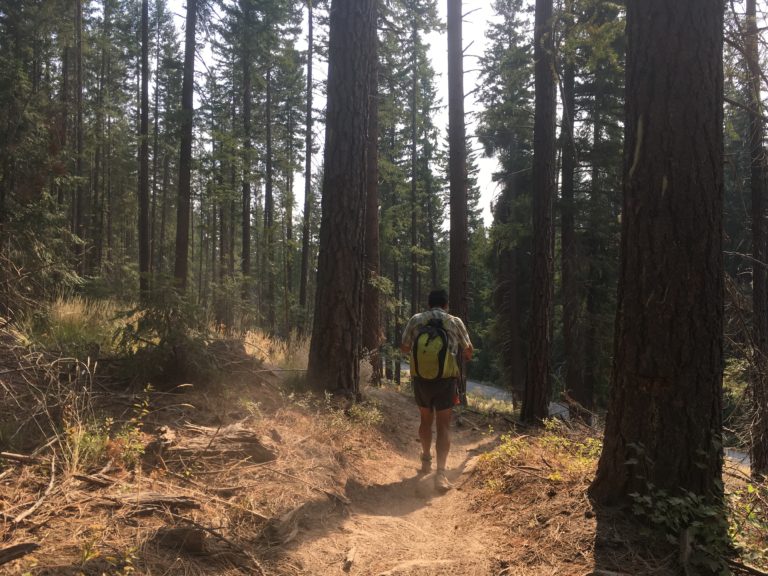
When we finally got within eyesight of the finish, we were met with the cheers of the dozen or so folks who’d hung around in camp chairs. (And Van who, of course, was standing in her robe on her own two legs, waving us in and looking fresh as a daisy.) We walked it in, finishing in 32:45ish.
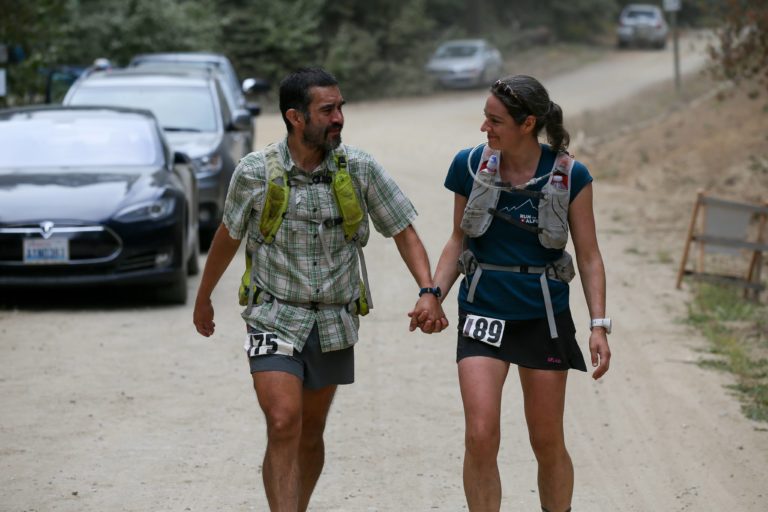
Crossing the finish line. Photo by Ross Comer.
Plain this year was such a gift. A humbling one, as these things so frequently are. Though the course itself has almost nothing in common with Hardrock, the event as a whole reminded me very much of it—a small cadre of masochists coming together once a year to share a stupidly hard endurance challenge in the mountains. It is a challenge in which absurdities are celebrated, and everyone feels like family by the end.
I grew up in a family of many strong, independent women. As an only child, I also spent a lot of time in my childhood alone, more comfortable relying on myself than spending time in the company of others. Team sports were never my jam, and I fell in love with running as a teenager because of the solitude it permitted me. I’ve long regarded neediness as a sin. In other words, I’ve grown into someone who’s frequently independent to a fault—scared of needing anyone else, scared of being needed.
George and I are different people in many ways, but he is someone who’s also spent many years insisting on relying primarily on himself. For me, and perhaps for him, too, the real gift of Plain was its reminder that we weren’t put on this planet to trudge through life alone. Sure, it is ultimately up to each individual runner to keep putting one foot in front of the other; no doubt, Plain is an event that—more than most—requires stubborn self-reliance. But, perhaps because of that, the moments that occasionally puncture that solitude become all the richer.
Plain is a course that can theoretically leave you alone with your thoughts for such excruciating swaths of time; even the brief encounters with humans at Search and Rescue checkpoints provide such a mental boost. I feel honored to be a part of “the Plain family” now. Mostly, I’m grateful to have shared this experience with the man who’s helping me learn that sometimes (most times), we really are stronger together.
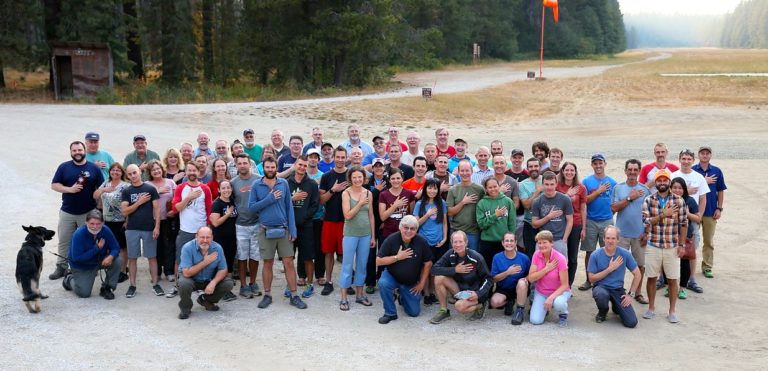
These are our hearts. 2017 Plain Family, including many of the S&R volunteers. Photo by Ross Comer.
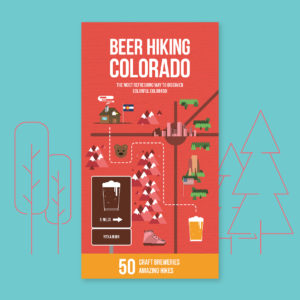

Nice job! I was laughing when I read, “why do we do this to ourselves”. It seems to me that for many of us, so much of ultra running is not really racing, it’s more of a journey of self-discovery. If you are racing, it’s more of a race to find out what you are capable of or what makes you tick, not for a win. Many people take years to figure this out, we can do a pretty good job in just around 24-34 hours. 🙂
I have never been as low as it sounds like you two were at Plain but I sure as hell can attest to the benefits of running with a friend/pacer/sibling. For me, it rules compared to going solo.
Congratulations on your finish, on helping George finish and for having George there to support you. I live vicariously through quite a few people and you have been on that list for a while.
[…] These Are Our Hearts: Plain 100+ Run Report – Yitka Winn […]
That is absolutely amazing! You and George are a great team! Let’s stay in touch, I’ll be running vicariously, by following your adventures!!!
Very good job !
Your words are reverberating through the years. I’m 2 weeks out from toeing the line at Plain and reading this reinvigorates my spirit. Thank you.